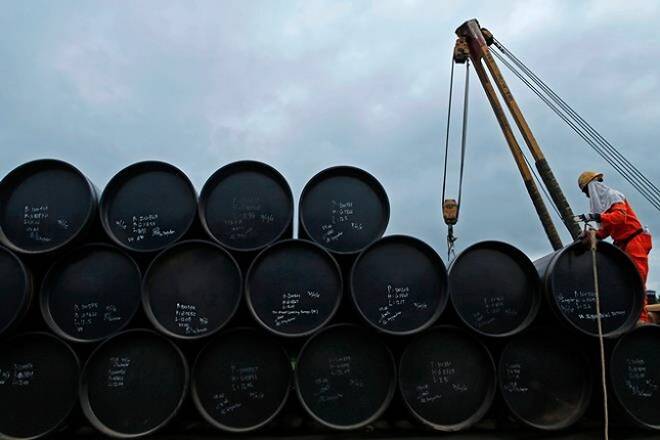Advertisement
Advertisement
Donald Trump’s ‘New Energy Revolution’ to Give Some Headache to OPEC
By:
The selling pressure in the oil market intensified after investors suddenly lost confidence in OPEC’s capacity to drain the global supply glut
The selling pressure in the oil market intensified after investors suddenly lost confidence in OPEC’s capacity to drain the global supply glut, while on the flip part of the world, in the US, the oil inventories kept on climbing higher.
Another important issue with the rise in the US oil inventories is that the uptrend is certainly not a coincidence, in contrary; the Trump administration is actively willing to reduce the country’s external oil dependency.
President Donald Trump’s support for oil production, while stepping away from the environmental legislation that has been put in place by Obama administration is playing against the OPEC’s efforts to moderate the global oil inventories. Donald Trump has just signed an executive order to wind down Obama’s clean climate policies in order to facilitate coal and oil production, create jobs and minimize the US dependency on external energy sources. He called his step the ‘New Energy Revolution’.
Digging in numbers, the US imported roughly 40% of its oil from Canada and 11% from Saudi Arabia in 2015. The EIA reported that oil imports stood at 38% and 12% respectively in 2016. The data suggests that Mr. Trump has enough room to further squeeze the global oil markets and pressure the prices on the downside.
On the other hand, Saudi Arabia, which has been doing the heavy lifting since the OPEC countries and Russia agreed to cut production, somewhat deviated in February by increasing its production above 10 million barrels per day. As a result, Saudi retraced 30% of its January cut. The latter has also dented the confidence in the deal.
Of course, OPEC and Russia’s oil ministers meet on regular basis to reassure the markets that they are committed to their production cut agreement. The latest meeting was hold over the weekend of March 25-26, as a reaction to the recent sell-off in the oil markets, which sent the barrel of WTI down to $47 and the barrel of Brent crude to $50 for the first time since the November OPEC agreement. Nothing concrete came out from the unscheduled meeting.
The OPEC will meet on May 25th. Should the league of oil producers fail to extend the production cut deal, or ideally gear up reducing the supplies, the WTI could extend losses toward the $40 and lower. If however, the deal is freshened, the price of a barrel should stabilize at about the $50/55 depending on the firmness of the statement.
On the run up to the meeting, the oil prices will be subject to scheduled weekly EIA data from the US, and unscheduled statement from the OPEC and Russia.
From a technical point of view, the $47 level is the key support, if broken, could pave the way to $45, the pre-November deal level. It is then unlikely for the OPEC to let the markets drop below this level. Mean-reversion traders are highly likely to seek dip-buying opportunities, as the sensitivity to any verbal intervention is intensified near the critical levels.
On the upside, there is a minor resistance at $48.95 (minor 23.6% retracement on the latest February – March drop & 200-day moving average) and a critical resistance $50.00/50.05 (major 38.2% retracement). Above the $50 threshold, mean-reversion offers are eyed at $51 (the 50% level) and $51.96 (major 61.8% retracement).
In summary, we have a rangebound view between $45 and $52. Breakout on either direction could trigger a fresh directional move with the topside target placed at $55 and the downside point of reference at $42.75 (November 13th dip).
This article is written by Ipek Ozkardeskaya, a senior market analyst at LCG
About the Author
Guestauthor
Advertisement
